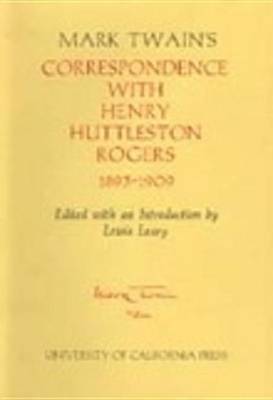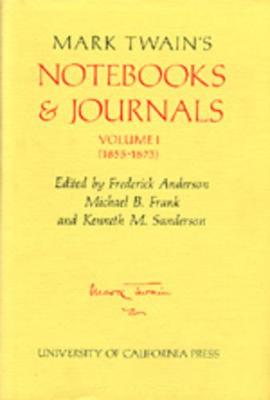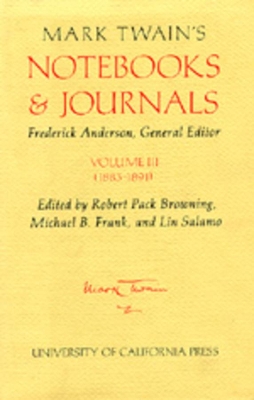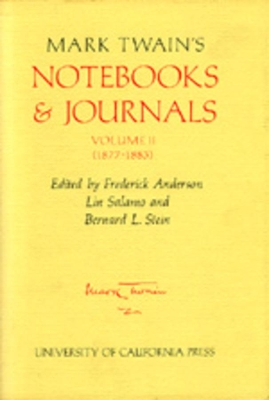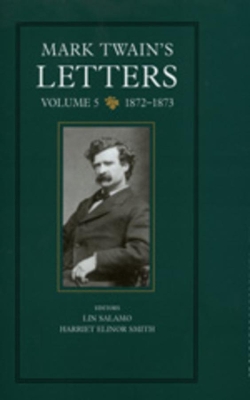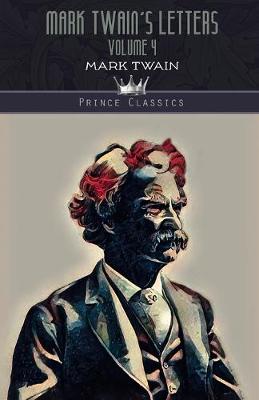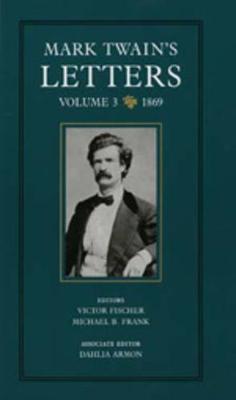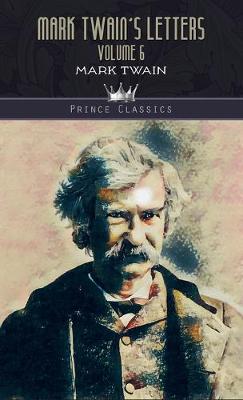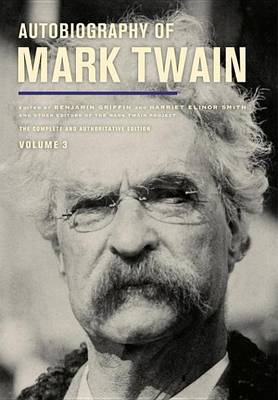Mark Twain Papers
18 primary works
Book 1
Mark Twain's "Which Was the Dream?" and Other Symbolic Writings of the Later Years
by Mark Twain
I wonder if it is?'. Behind this naive query was his strong interest in conscious and unconscious levels of mental experience, which were then being explored by the new psychology.
Book 3
Book 4
Mark Twain's Correspondence with Henry Huttleston Rogers, 1893-1909
by Mark Twain
Book 5
Book 6
Paine's edition of the book was based, for the most part, on the earliest of the three versions, written during the time of Mark Twain's supposed creative paralysis. He and Duneka suppressed a quarter of the text of this manuscript and grafted onto it the last chapter of the latest version. Mark Twain began the first manuscript, "The Chronicle of Young Satan," in 1897; late in 1898, he tried to recast the story in a Hannibal setting, then returned to his first version, only to abandon it permanently in 1900. Between 1902 and 1908, he worked on the third and longest version, the only one the author called "The Mysterious Stranger." The publication of these texts therefore offers an opportunity to observe Mark Twain's sustained literary struggle with a central theme and to reevaluate the tantalizing question of the author's late work.
Book 7
Book 8
The separation of entries is indicated on the printed page by extra space between lines; when the end of a manuscript entry coincides with the end of a page of the printed text, the symbol [#] follows the entry. A full discussion of textual procedures accompanies the tables of emendation and details of inscription in the Textual Apparatus at the end of each volume; specific textual problems are explained in headnotes or footnotes when unusual situations warrant.
Book 8
The near bankruptcy of the publishing firm and the debacle of the typesetter scheme finally resulted in 1891 in a drastic decision--to leave the house in Hartford, Connecticut, which had long been the symbol of Mark Twain's rising fortunes and idyllic family life, and move to Europe for an indefinite period in the hope of reducing the family's living expenses. The Clemens family would never return to the Hartford house, and the European stay would lengthen into an almost unbroken nine years of exile. Mark Twain's notebooks permit an intimate view of this turbulent period, whose triumphs were tempered by intimations of financial disaster and personal bitterness.
Book 8
He returned to England the following year, this time accompanied by his family and by a secretary who would record the observations printed as the last notebook in volume 1. Volume 2 of Mark Twain's Notebooks and Journals, documenting Clemens' activities in the years from 1877 to 1883, consists largely of the record of three trips which would serve as the source for three travel narratives: the excursion to Bermuda, a prolonged tour of Europe, and an evocative return to the Mississippi River. Despite the common impulse to preserve observations and impressions for literary use, the contents of the notebooks are remarkably different in their vitality-and the works which developed from the notes are correspondingly varied.
Book 9
Clemens' personal life at this time was for the most part fulfilling, although saddened by the loss of his nineteen-month-old son, Langdon, who died of diphtheria. "Life in the Nook Farm" community of writers and progressive thinkers and activists was proving to be all the Clemenses had hoped for. The 309 letters in this volume, more than half of them never before published, capture the events of these years with detailed intimacy. Thoroughly annotated and indexed, they are supplemented by genealogical charts of the Clemens and Langdon families, a transcription of the journals Clemens kept during his 1872 visit to England, book contracts, his preface to the English edition of "The Gilded Age", contemporary photographs of family and friends, and a gathering of all newly discovered letters written between 1865 and 1871. This volume is the fifth in the only complete edition of Mark Twain's letters ever attempted, and the twenty-fourth in the comprehensive edition known as "The Mark Twain Papers" and "Works of Mark Twain".
Book 9
Book 9
Book 9
At the beginning of 1870, fresh from the success of "The Innocents Abroad", Clemens is on 'the long agony' of a lecture tour and planning to settle in Buffalo as editor of the "Express". By the end of 1871, he has moved to Hartford and is again on tour, anticipating the publication of "Roughing It" and the birth of his second child. The intervening letters show Clemens bursting with literary ideas, business schemes, and inventions, and they show him erupting with frustration, anger, and grief, but more often with dazzling humor and surprising self-revelation. In addition to "Roughing It", Clemens wrote some enduringly popular short pieces during this period, but he saved some of his best writing for private letters, many of which are published here for the first time.
Book 9
This volume has been supported by the National Endowment for the Humanities and by a major donation to the Friends of The Bancroft Library from the Pareto Fund.
Book 9
This volume is the sixth in the only complete edition of Mark Twain's letters ever attempted. The 348 letters it contains, many of them never before published, have been meticulously transcribed, either from the original manuscripts (when extant) or from the most reliable sources now available. They have been thoroughly annotated and indexed and are supplemented by genealogical charts, contemporary notices of Mark Twain and his works, and photographs of him, his family, and his friends.
Book 10
This major literary event brings to readers, admirers, and scholars the first of three volumes and presents Mark Twain's authentic and unsuppressed voice, brimming with humor, ideas, and opinions, and speaking clearly from the grave as he intended. Editors: Harriet E. Smith, Benjamin Griffin, Victor Fischer, Michael B. Frank, Sharon K. Goetz, Leslie Myrick
Book 11
Book 12
Also included in this volume is the previously unpublished "Ashcroft-Lyon Manuscript," Mark Twain's caustic indictment of his "putrescent pair" of secretaries and the havoc that erupted in his house during their residency. Fitfully published in fragments at intervals throughout the twentieth century, Autobiography of Mark Twain has now been critically reconstructed and made available as it was intended to be read. Fully annotated by the editors of the Mark Twain Project, the complete Autobiography emerges as a landmark publication in American literature. Editors: Benjamin Griffin and Harriet Elinor Smith Associate Editors: Victor Fischer, Michael B Frank, Amanda Gagel, Sharon K Goetz, Leslie Diane Myrick, Christopher M Ohge.

